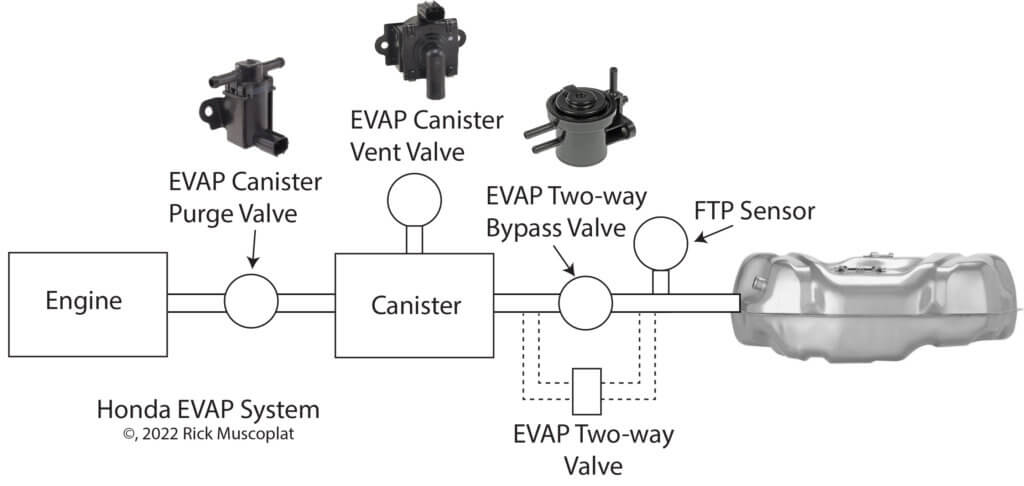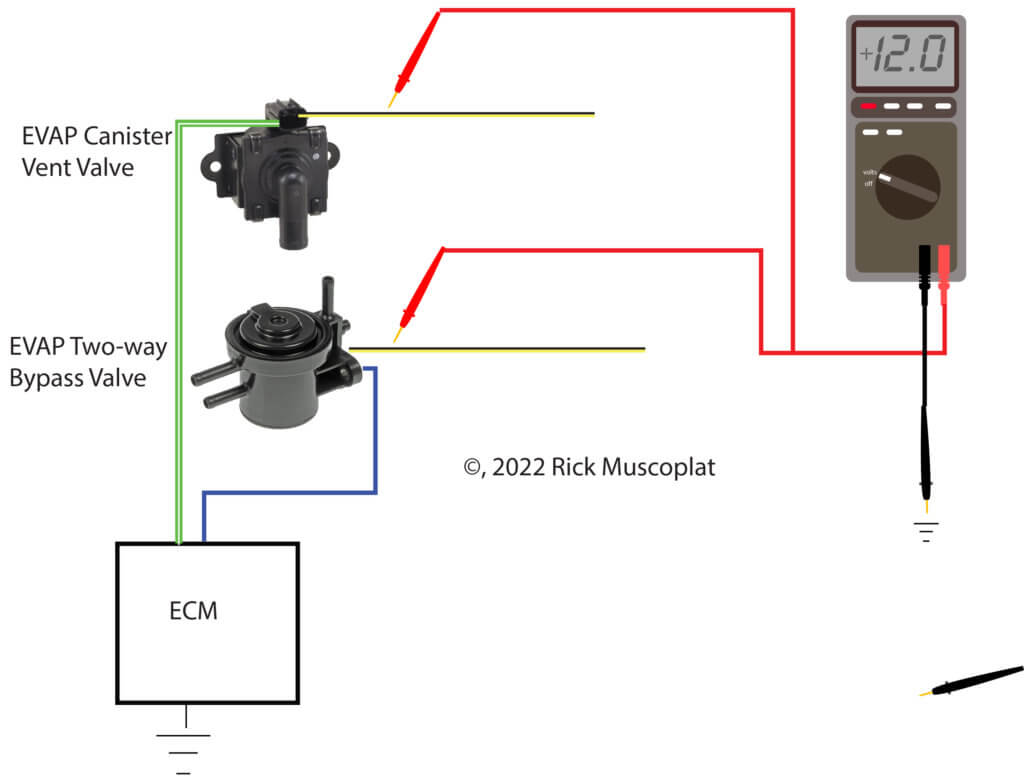Honda P1457 — diagnose and fix
Honda P1457 — Diagnose and fix
A Honda P1457 Evaporative Emission (EVAP) Control System Leakage is usually caused by a faulty solenoid valve or a cracked vacuum hose.
Honda EVAP system components
The Honda EVAPORATIVE emissions system consists of the following items
Fuel tank
Charcoal canister
Canister Vent valve
Two way bypass valve
Fuel tank pressure sensor
Purge valve

How the Honda EVAP system works
During fueling, fuel vapors are adsorbed by the charcoal canister to prevent them from escaping to the atmosphere. After fueling, the ECU commands the purge and vents valves to open. The purge valve is connected to the intake manifold, so opening it allows the engine to suck fuel vapors out of the charcoal canister and burn them in the engine.
While the engine is running, fresh air enters the canister through the canister vent valve. That’s how the canister is purged of fuel vapor.
During the purge cycle, the ECU detects the presence of extra fuel and reduces fuel injector volume to compensate. Once the ECU detects a drop in fuel vapor flow from the purge valve, it closes the canister vent valve. At this point the entire fuel system is under vacuum because the purge valve is still open. The ECU detects the vacuum condition by watching the fuel tank pressure sensor (FTP). The ECU then closes the purge valve, leaving the entire fuel system under vacuum.
The ECU holds the fuel system under vacuum and monitors the FTP sensor. If it sees a drop in vacuum, it sets a Honda P1457 indicating a leak somewhere in the system.
How to diagnose Honda P1457
You’ll need a multimeter, backprobes and a handheld vacuum pump. Refer to the diagrams below. NOTE: Wire colors may change based on model and year, so consult a wiring gram.
With the key on, backprobe the black/green wires at the canister vent and two-way bypass valve. You should see battery voltage on both wires. If not, check for a blown fuse or open wire.
The ECU provides ground to each valve. Use a backprobe on the green/white wire to the vent valve. The valve should close and hold vacuum. If it doesn’t close, replace the valve. If it closes but doesn’t hold vacuum, remove the valve and check for charcoal particles. If you find charcoal, the canister is damaged and both the canister and the valve must be replaced. If there’s no charcoal and the valve doesn’t hold vacuum, replace it. If it does hold vacuum, it’s good and not the source of the Honda P1457 code.
Next, move on to the two-way bypass valve and complete the same tests by using a backprobe and grounding the solenoid. Replace if it doesn’t work or won’t hold vacuum.

©, 2022 Rick Muscoplat
